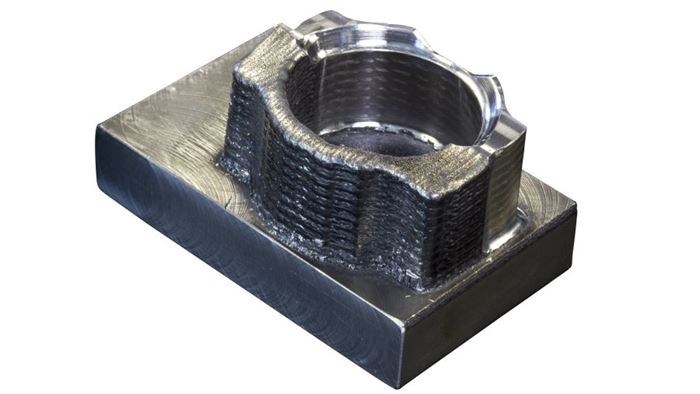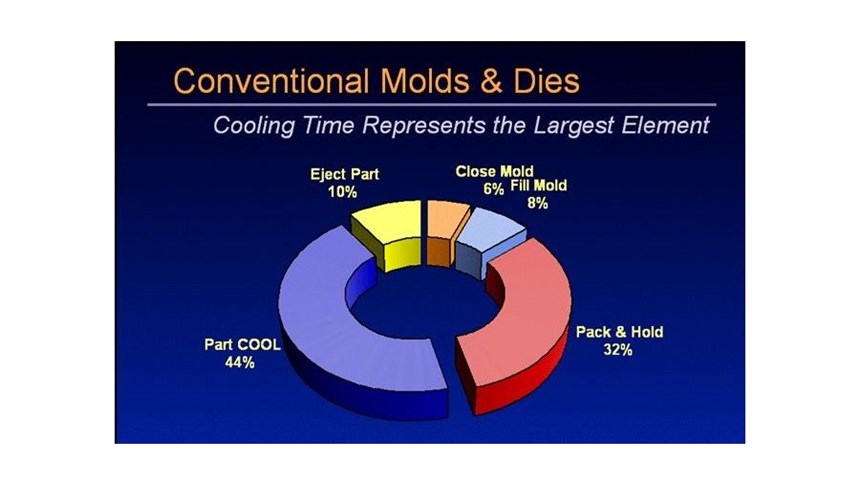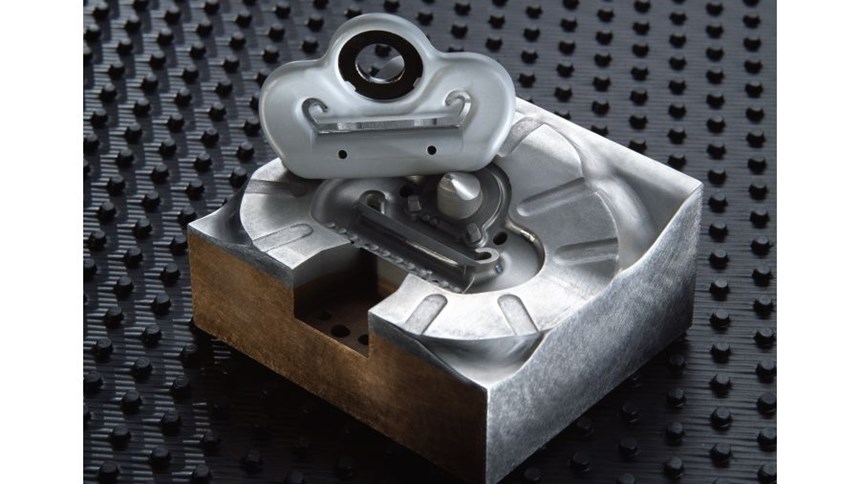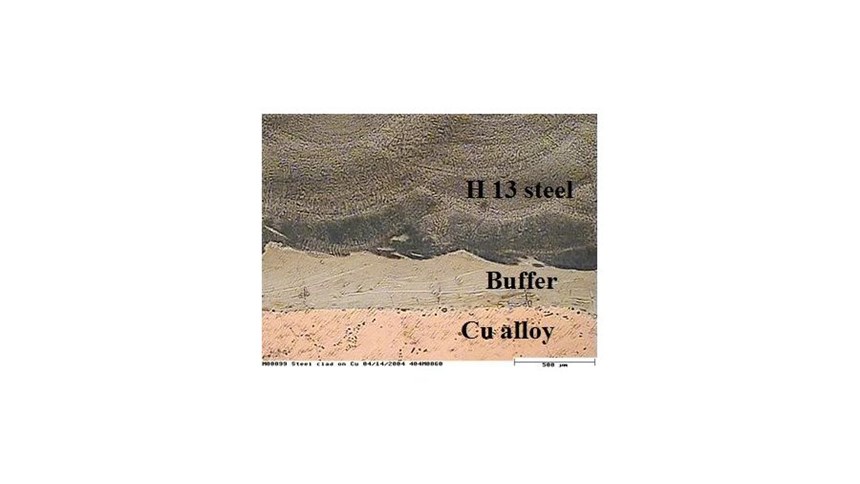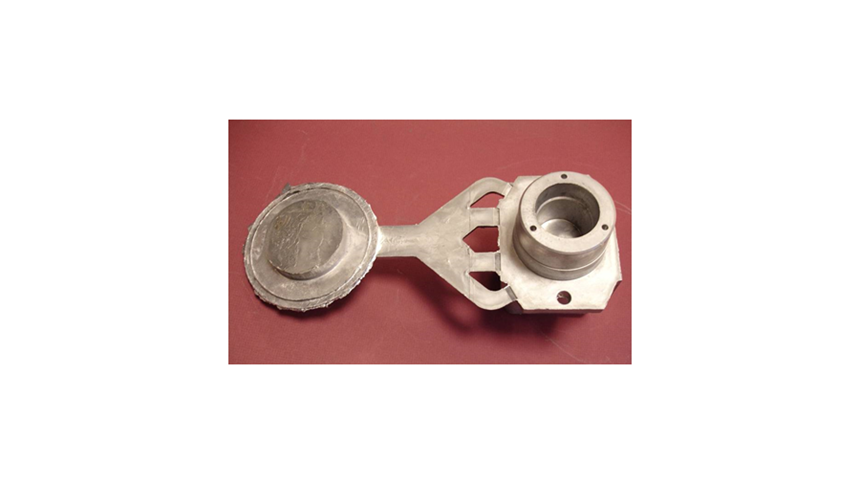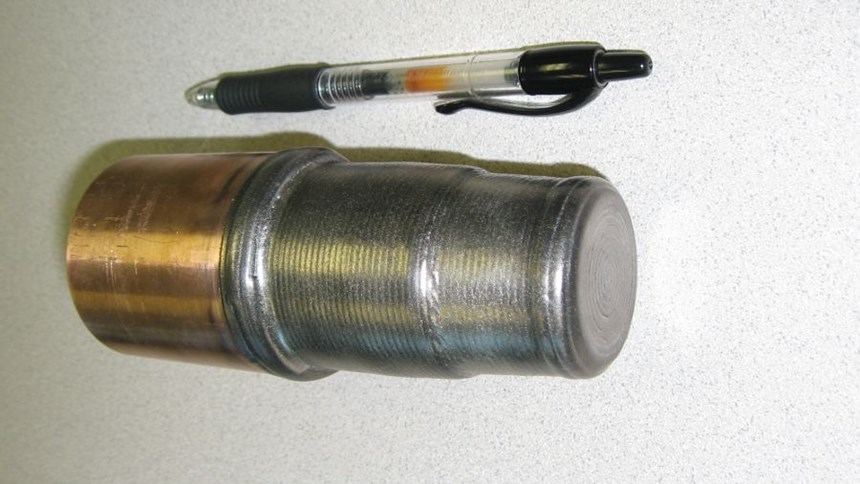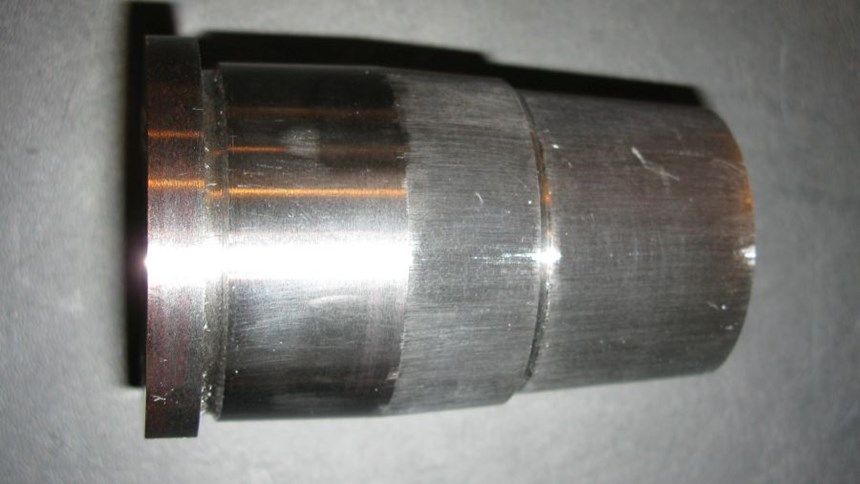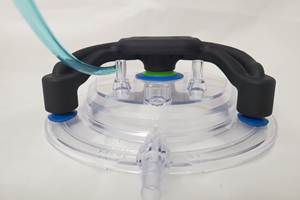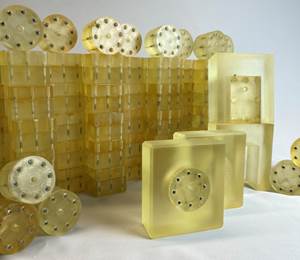Case Studies of Multi-Material Manufacturing
Tools for injection molding, die casting and powder compaction all illustrate the potential to achieve greater part performance and manufacturing efficiency by blending workpiece materials through AM.
Editor’s Note: Direct Metal Deposition (DMD) systems developed by DM3D Technology build metal parts by injecting powder into a weld pool created by a laser. One of the possibilities is multi-material manufacturing. A dual-hopper capability of these systems allows for controlled deposition of multiple materials on a single part. This means, for example, that a part can be designed and created to offer high toughness at the core combined with fatigue, wear or corrosion resistance resulting from some different material at the surface. DM3D’s Bhaskar Dutta reports on the following case studies illustrating some of the applications of multi-material manufacturing.
Case Study I: Injection Mold Tooling
Figure 1 in the sequence of illustrations above shows the shows cycle time breakdown typical of plastic part molding. As the diagram shows, part cooling time after plastic injection affects the total cycle the most (44 percent), meaning a reduction in cooling time would have greatest impact on productivity. Figure 2 shows a tool used for making seat belt clamps in cars. The tool has been made from tool steel cladded on a copper base using DMD. The thermal conductivity of copper alloys is almost 6.0 times that of tool steels. This conductivity allows the copper base to work as a heat sink, providing fast cooling of the part for a significant reduction in cycle time. Meanwhile, the steel clad on the molding surface provides the required strength and wear resistance of the tool.
The key to this cladding is successful joining of copper and steel. Conventional welding techniques can’t join these materials together. DMD joins them with a laser thanks in part to a proprietary buffer material. Figure 3 is a microscopic view of this cladding showing the buffer.
The steel-clad technology allowed this customer to reduce molding cycle time by 26 percent, achieving a 28-second cycle instead of 38 seconds with a conventional tool. That cycle time reduction translated to about $60,000 in savings per year per tool.
Case Study II: Die Casting Tooling
This work was performed in collaboration with Case Western Reserve University and the North American Die Casting Association.
Similar to injection molding, the efficiency of aluminum die casting is also affected significantly by part cooling time. The high temperatures and presence of liquid aluminum also pose other challenges to the tools. During casting, the core (usually made of tool steel) is surrounded by molten aluminum and overheats to the point that dissolution of the steel takes place (commonly called soldering in the die casting industry). Extracting heat more efficiently from the core can reduce the core temperature, prevent soldering and allow shorter cycle times. Figure 4 in the images above shows the aluminum part that was investigated in this study. Figures 5 and 6 show the composite core, which was made of copper alloy DMD-cladded with H13 tool steel using an intermediate buffer layer.
Figure 7 shows thermal imaging used to evaluate this composite core. Surface temperature was measured to be about 100oF lower than that of the conventional core. The benefits seen were a 13 percent reduction in casting cycle time (40 seconds for the H13/copper core versus 55 seconds for the purely H13 core) along with reduced soldering due to lower core temperature.
Case Study III: Powder Compaction Tooling
Powder compaction tools used in sintering undergo significant load cycling. Fatigue life of these tools is critical. Depending on the part design, a sharp radius in the tool geometry can act as stress concentrator, affecting the tool life significantly. Multi-material manufacturing technology offers an unusual solution for this problem. An alternate layering of hard metal and soft metal in the upper part of the tool is proposed to mitigate this stress-concentration problem. The lead photo in the series of illustrations above shows a sample of this. Fatigue cracks that arise at stress concentration points on the surface will be arrested when they propagate into the soft metal layer, while the presence of alternate hard metal layers provides the tool with the required stiffness and strength for metal compaction. This tooling technology is expected to aid in mitigating fatigue life problems with powder compaction tools.
Related Content
8 Ways the Plastics Industry Is Using 3D Printing
Plastics processors are finding applications for 3D printing around the plant and across the supply chain. Here are 8 examples.
Read MoreIn "Hybrid" FIM Process, 3D Printing Complements Injection Molding
In a recent case study, Alpine Advanced Materials partnered with Nexa3D to produce 3D printed tooling for injection molded composites. Utilizing Nexa3D’s XiP desktop 3D printer and its Freeform Injection Molding process, Alpine was able to reduce prototype tooling production time and cost alike for its customers.
Read MoreThe Connector Conundrum: 3D Printed Mold Tooling’s Role in Innovation
ReelView Fishing faced an electronics obstacle in the development of its new technology for underwater video. Additive manufacturing for moldmaking allowed for the speed necessary to iterate to a solution. How inventors and invention will benefit from new ways of obtaining production-ready tooling.
Read MoreCopper, New Metal Printing Processes, Upgrades Based on Software and More from Formnext 2023: AM Radio #46
Formnext 2023 showed that additive manufacturing may be maturing, but it is certainly not stagnant. In this episode, we dive into observations around technology enhancements, new processes and materials, robots, sustainability and more trends from the show.
Read MoreRead Next
3D Printed Polymer EOAT Increases Safety of Cobots
Contract manufacturer Anubis 3D applies polymer 3D printing processes to manufacture cobot tooling that is lightweight, smooth and safer for human interaction.
Read MoreCrushable Lattices: The Lightweight Structures That Will Protect an Interplanetary Payload
NASA uses laser powder bed fusion plus chemical etching to create the lattice forms engineered to keep Mars rocks safe during a crash landing on Earth.
Read MoreAlquist 3D Looks Toward a Carbon-Sequestering Future with 3D Printed Infrastructure
The Colorado startup aims to reduce the carbon footprint of new buildings, homes and city infrastructure with robotic 3D printing and a specialized geopolymer material.
Read More
